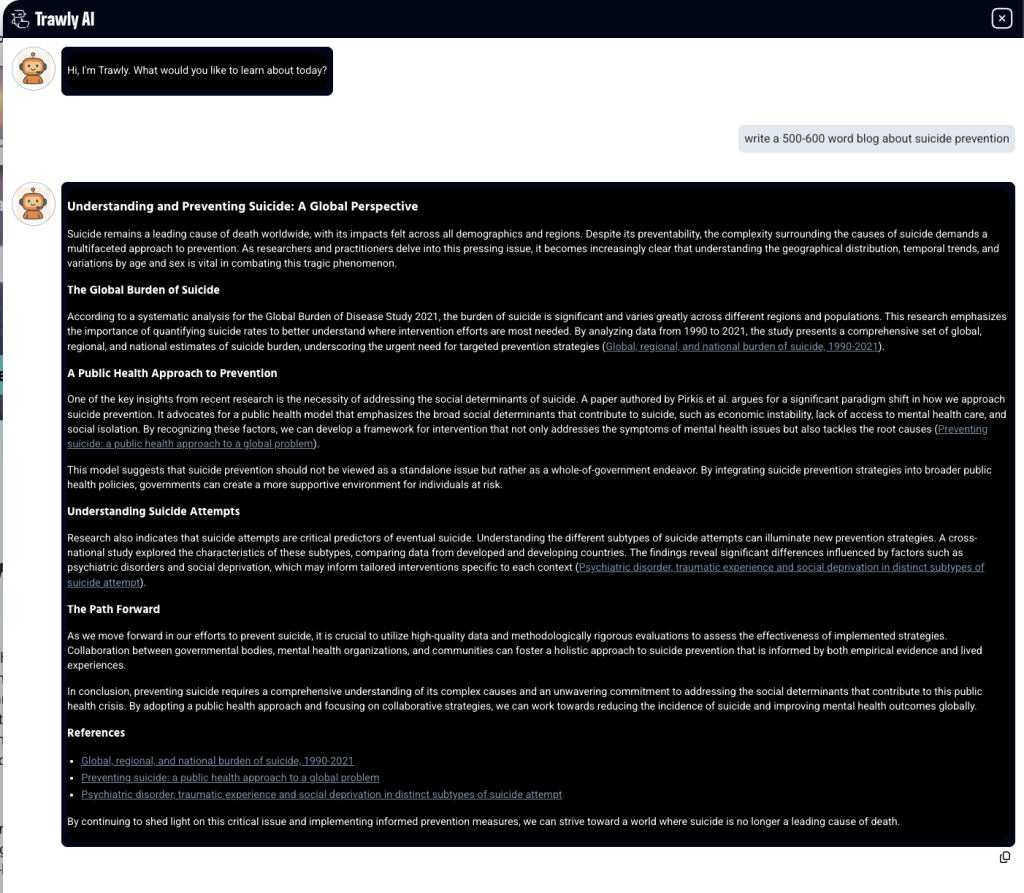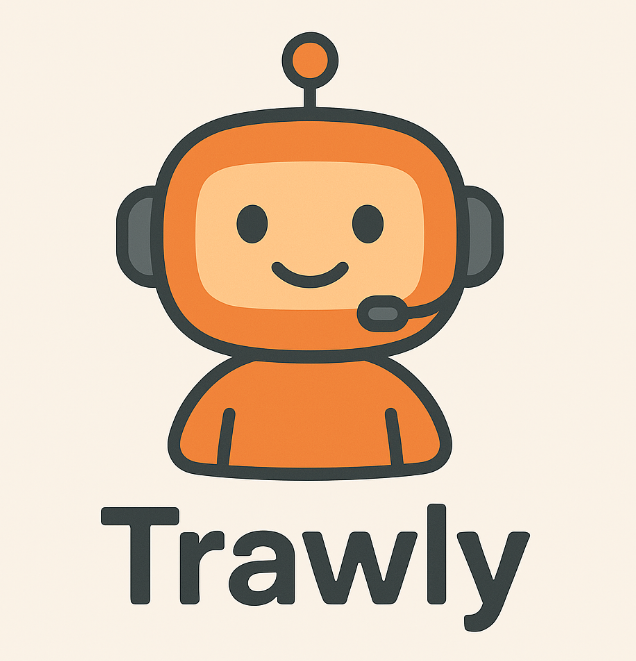
Get the Most Out of Trawly: Our Public Health AI
We recently launched Trawly, a powerful new tool that uses AI to answer your questions using the latest public health research. It’s called a RAG (Retrieval-Augmented Generation) system—and it’s like having an ultra-fast research assistant trained on recent public health publications at your fingertips.
But here’s the catch: how you use it makes a big difference. The system is powerful, but it needs a little finesse to get the best results.
So, how can you get clear, accurate answers backed by real citations? Read on.
🎯 1. Keep Your Prompts Simple and Focused
The number one tip? Be clear and direct with your prompt. The model works best when you just tell it what you want in plain language.
✅ Good Prompt:
“Write a 500-word blog about suicide prevention in public health.”
🚫 Not-so-good Prompt:
“Given your knowledge base, generate a summary that cites recent studies and uses markdown formatting.”
Why? Because the system already knows to use its knowledge base, cite sources, and format correctly—no need to remind it. In fact, repeating those instructions can confuse the AI and make it fetch less relevant research.

🧠 2. Think Like a Search Engine
The RAG system works by searching for documents that match your prompt using something called vector search. That means it looks for semantically similar content in the research database.
Your job? Help it search better.
For example:
✅ Instead of:
“Talk about prevention efforts.”
Try:
“Describe prevention strategies for opioid overdose among young adults.”
More specific = better results.
🔁 3. Keep the Topic in Follow-Ups
Right now, the system doesn’t always carry over the context of your earlier messages. So if you ask a follow-up question, mention the original topic again.
Here’s an example:
🚫 Not great:
“Add citations to the previous response.”
✅ Much better:
“Add citations to the suicide prevention blog you just wrote.”
That little bit of extra context keeps the conversation on track and ensures the AI pulls the right documents again.
✍️ Example: A Great Session
Here’s a sample of how a well-structured conversation might go:
You:
“Write a short blog post about food insecurity and its impact on child health.”
Trawly Response:
🧠 The system pulls 3-5 highly relevant, peer-reviewed studies and formats a clear, engaging response with citations.
You (Follow-up):
“Can you add a few statistics about how food insecurity affects childhood development?”
Trawly Response:
📊 Now the system knows to stay on the topic of food insecurity and adds meaningful stats without veering off course.
🛠 TL;DR: How to Prompt Like a Pro
Here’s your quick cheat sheet:
✅ DO:
- Use clear, topic-focused prompts
- Be specific (e.g., “opioid prevention for teens”)
- Mention your topic again in follow-ups
🚫 AVOID:
- Overloading the prompt with instructions (“use markdown,” “cite studies”)
- Vague or overly broad prompts
- Assuming the AI remembers your last message without help
🙋 Still Have Questions?
We’re always refining this tool to make it smarter and easier to use. If something doesn’t look right or you want help shaping your prompt, just reach out. We’re here to help you unlock the full power of the latest public health research.
👉 Try the tool now and see what it can do!

Act Now – Public Health Can’t Wait!
The future of public health is being shaped right now. Stay informed with weekly expert insights and take action where it matters most. Subscribe for free today!
📢 Time is critical! Share this blog now and rally others to join the movement.


